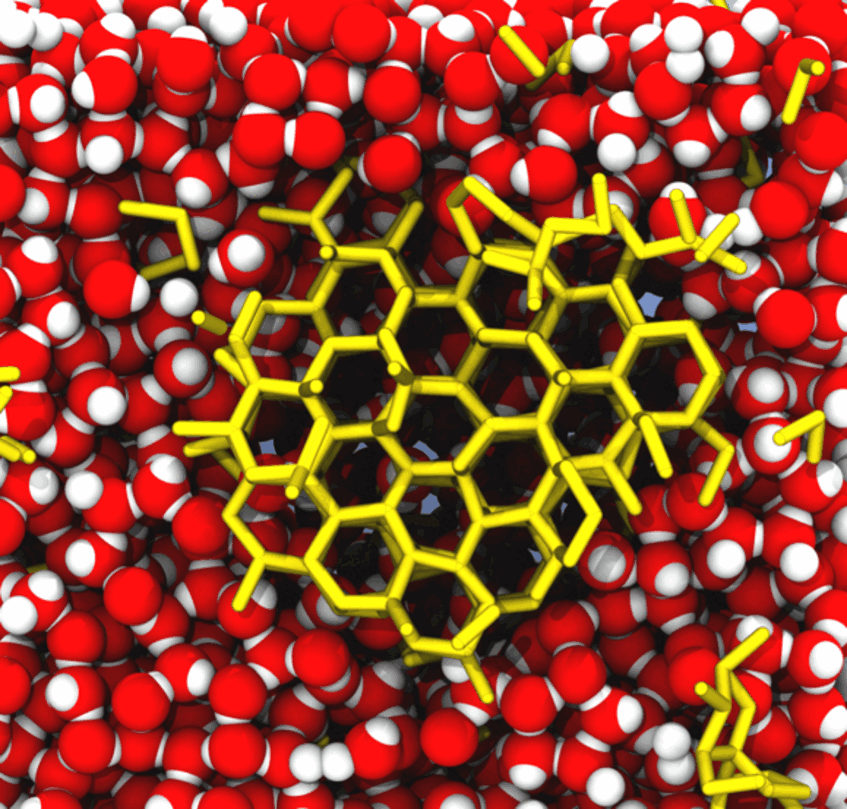Machine learning for molecular dynamics simulations

A critical ice nucleus in super-cooled water obtained from a transition path sampling simulation carried out with the TIP4P/ice model. The homogeneous crystallization of water is the prototypical example of a rare but important event. This represents a challenge for the simulation of many processes occurring in complex materials, ranging from crystallization and cavitation to transport in and on solids, phase separation and structural phase transition. One of the main objectives of the Dellago group is to develop computational tools to address the time scale problem arising in such processes.
Machine learning for molecular dynamics simulations
Modern computer simulations of complex materials are facing (at least) three fundamental challenges: (a) compute realistic forces and energies (at or beyond chemical accuracy) for large systems; (b) sample configuration space efficiently and determine pathways connecting its regions; (c) make sense of the increasingly large amount of produced data using essential models. In our group, we develop computational methods that address these questions and then apply them to various condensed systems. In particular, we have recently developed a neural-network based potential for water [1], which yields the accuracy of ab-initio simulations at a fraction of their cost. In a different but highly related research line, we develop transition path sampling methods to overcome the rare event problem, and applies them to processes such as the heterogeneous crystallization on small seeds or the cavitation of water under negative pressures. Finally, we apply machine learning also to the sampled pathways to identify the relevant degrees of freedom in these reactions.
[1] T. Morawietz, A. Singraber, C. Dellago, and J. Behler, PNAS 113, 8368-8373 (2016)
